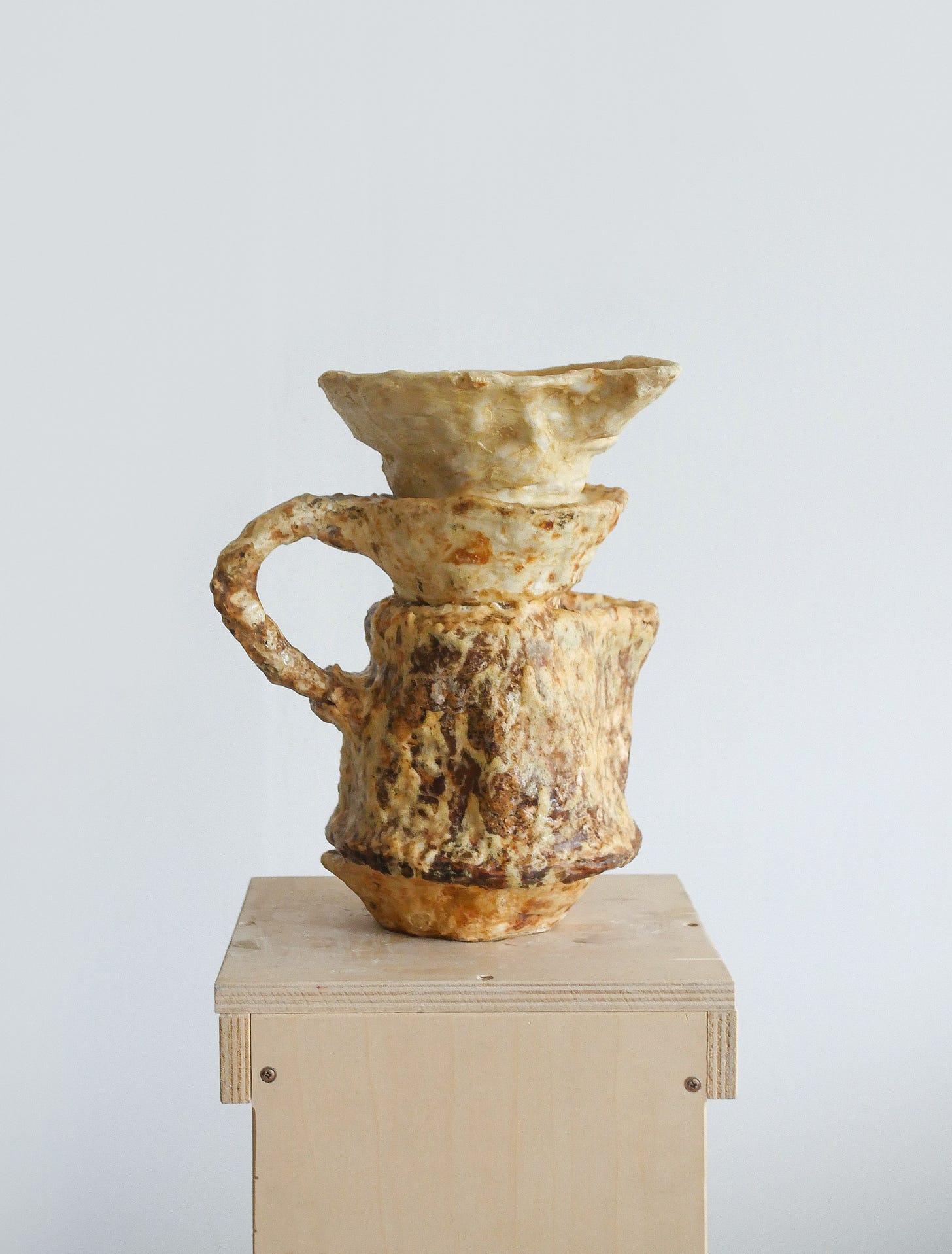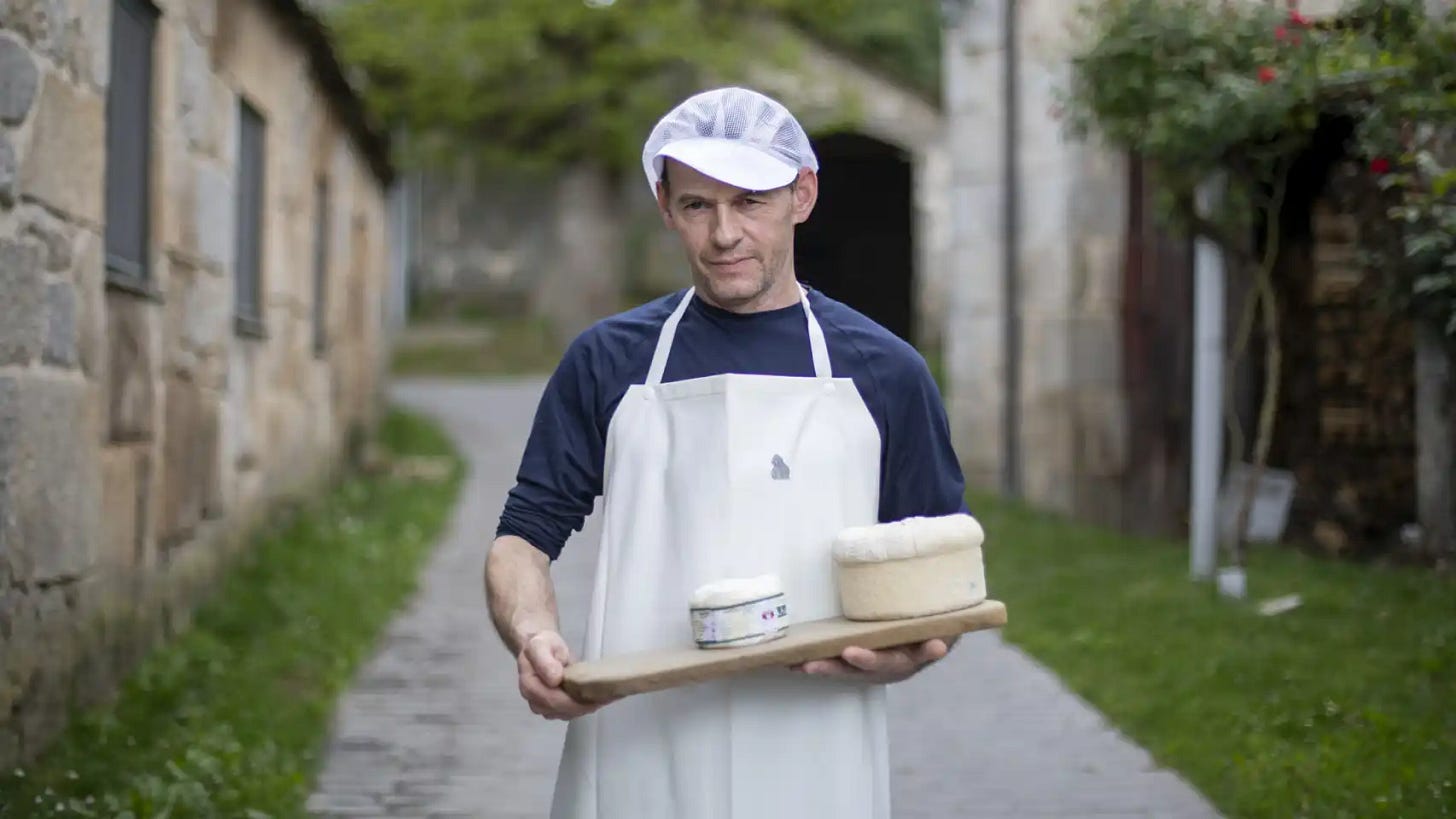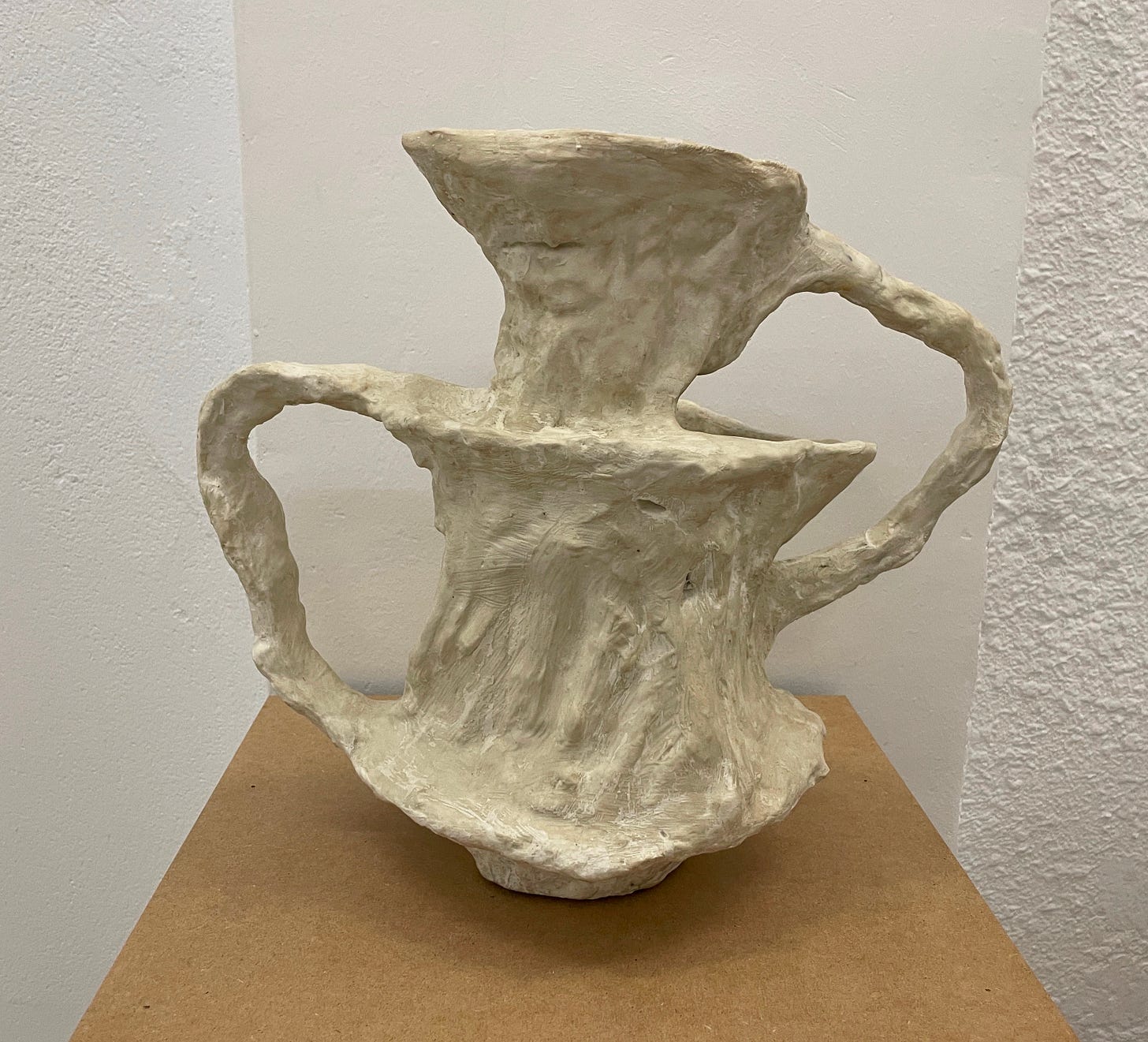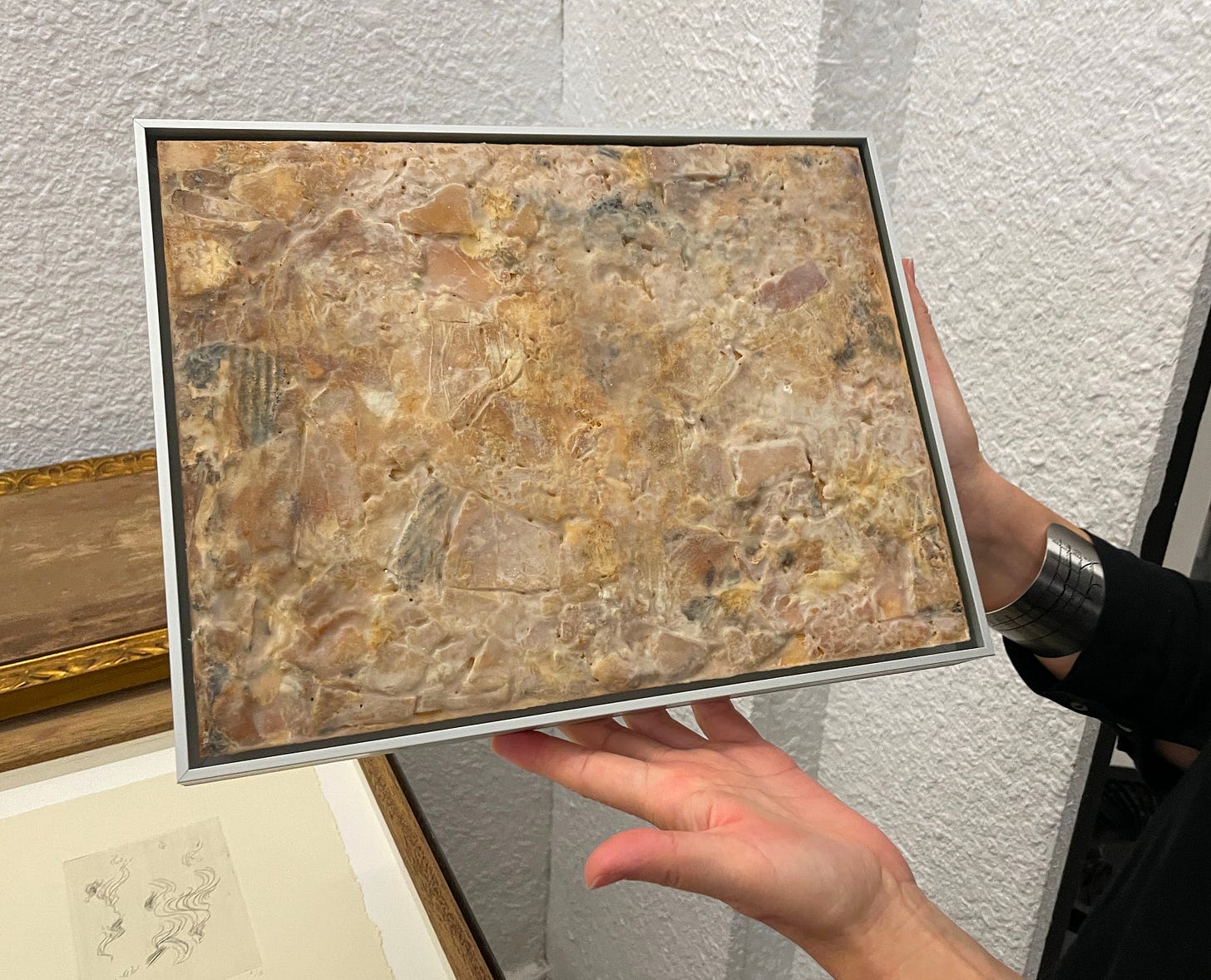Can you make art out of cheese? Carlos Fernández-Pello would say so. Most of the work in his recent exhibition Alguien nos entenderá cuando estemos muertos (Someone will understand us when we’re dead) at Galería Nordés in A Coruña, Spain were smeared, covered, and coated in the stuff. The Madrid-based artist began his lactic-artistic experiments a few years ago in Vilar de Cas, a village of less than 70 people in Lugo, Galicia where Fernández-Pello has family roots. Lugo is an important site of dairy production, and he collaborated with the artisanal cheesemaker Carlos Reija of Queixería Santo André in nearby Castroverde to create the exhibition’s unique vessels and panels.

Specialty cheeses abound across Spain, but Galicia’s rainy climate, green pastures, and six native cattle breeds make for especially tasty dairy products. Served as snacks and desserts, cheeses like San Simón, Arzúa-Ulloa, and tetilla are more than just food: they’re symbols of the region. Each variety is closely linked to a specific history, place, and process, and represents a living piece of cultural patrimony.
In fact, Fernández-Pello’s collaborator Reija worked for years to recover a lost local cheese with medieval origins. “I began to ask the grandpas and grandmas of the village and many of them told me that they remembered that their parents, grandparents, and great-grandparents made a Cebreiro cheese that was more cured. Different from the one made today,” Reija said in a 2021 article in El Español. Since 2015 he has been the only person in the world producing this special, once-forgotten cured Cebreiro cheese.

I don’t pretend to have any expertise in the intricacies of cheesemaking, but the process does remind me of making art: in each case, raw material is manipulated and transformed into something else. From milk to cheese, from idea to artwork, what matters is experimentation and time. Bacteria and ingredients change and preserve food, while influences and investigation shape artworks. The result of both is sensory experience and a kind of consumption, whether with the mouth or the eyes. The cheesemaker and the artist both create a sort of offering to others.
Unfortunately, I wasn’t present for the opening of Fernández-Pello’s exhibition, which featured samples of Reija’s celebrated Cebreiro cheese alongside the art. The show closed on March 21, but I caught a glimpse of the work on a recent visit to the gallery. A series of curious vessels recall botijos de trampa, fantastical pitchers traditionally used for social rituals, entertainment, and decoration in other parts of Spain. Like their folkloric precursors, Fernández-Pello’s pieces are an imaginative confluence of spouts, holes, and handles that are not functional in the usual sense, but nonetheless feel strikingly alive. This is because, in some sense, they are: their uncanny white surfaces are composed of layers of gesso, resin, and fermented dairy material that form a strangely human sort of skin.
Conservation questions come to mind with work like this, and so do ideas of value and permanence. Of course Fernández-Pello is conscious of these things, and even seems to be winking at them. In an interview with the artist, Julián Cruz says that Fernandéz-Pello “conceptualizes cheese so that it loses its most conventional social function — to be eaten — but at the same time mocks the artistic fetishism of our time.” Incorporating a humble and potentially perishable material like cheese into a work of art and putting it up for sale in the white cube of the gallery is a bold move. And using the cheese of Galicia, a peripheral place with a complex identity and at times fraught relationship to the rest of the country, is even more powerful.
The work asks many interesting questions through unexpected materials and processes. But it’s also made with cheese, and cheese is meant to be eaten! The other day at Nordés, gallery director Chus Villar pulled out one of Fernández-Pello’s panel pieces — a mottled landscape of smashed cheese paste and rinds — and suddenly I was hit by the heady aroma of all those pungent, fermented glories. Some say that the smell is the sense most linked to memory, but it’s also tied to taste, and to sensations of hunger and satiation. This piece, which in a photo might just look like a flesh-toned painted abstraction, abruptly put me in my own body, activating my nose, mouth, and gut. And with that strong scent sensation came the unmistakable realization: cheese is art.





So interesting!